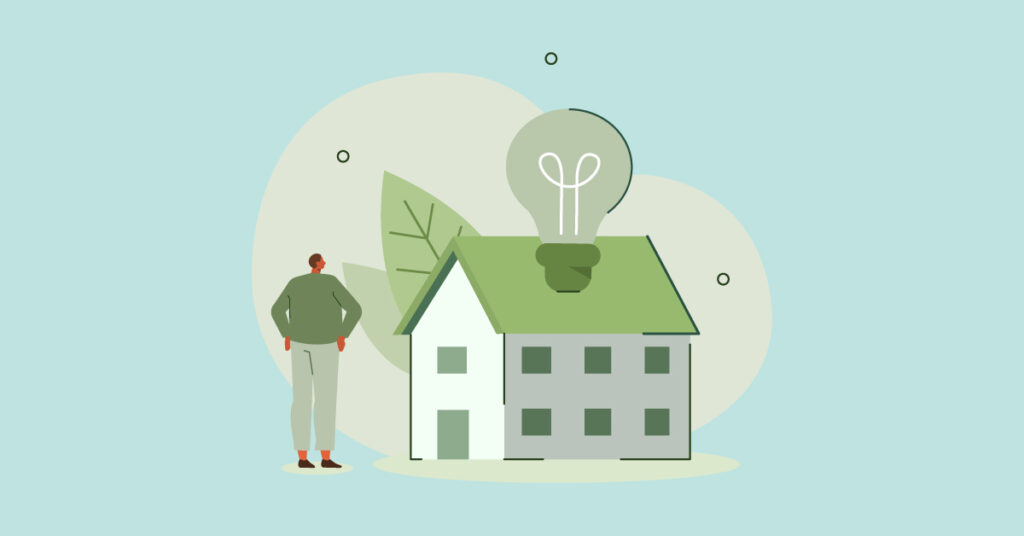When you’re planning a home renovation project, creating an accurate budget ensures that everything gets completed and you don’t overspend. Remodeling costs can add up, especially if you don’t have a solid plan in place before you begin.
Estimating a Budget for Home Renovations
The amount you’ll spend on home renovations depends on the specific rooms you choose to renovate, as well as the size and overall value of your home. The specific features you choose can also impact your budget. Higher-end appliances or finishes increase the overall cost.
In some cases, pricier materials or fixtures can be worth the cost. Spending a little more on materials that last longer can save you money in the long run.
For a rough estimate, consider the value and square footage of your home compared to the value and square footage of the area you want to renovate. If you plan to renovate 30% of your home, plan to spend slightly more than 30% of your home value on the project.
The Cost of Home Renovations by Project

In general, the most expensive rooms to renovate in your home are the kitchen and bathroom. These rooms typically require significant plumbing and electrical work during a renovation, and the costs for labor are higher than might be needed for other rooms.
According to the Journal of Light Construction 2024 Cost vs Value Report, here are some of the average costs of specific renovation projects:
- Midrange Minor Kitchen Remodel: $27,492
- Midrange Bath Remodel: $25,251
- Midrange Major Kitchen Remodel: $79, 982
- Upscale Major Kitchen Remodel: $158,530
- Upscale Bath Remodel: $78,840
- Roof Replacement with Asphalt Shingles: $30,680
- Midrange Primary Suite Addition: $164,649
- Vinyl Window Replacement: $21,264
- Vinyl Siding Replacement: $17,410
Keep in mind that prices may also be affected by your city, state and region. Metropolitan areas often have higher costs associated with remodels compared to renovations in rural areas.
Planning Your Home Renovation Budget
Actually developing your project budget can feel overwhelming. Here is a step-by-step guide to make budgeting easier when you’re ready to renovate:
Step 1: Choose the specific areas you want to renovate.
Doing a full roof-to-floorboards renovation may be out of your budget, so narrow down the areas that are most important to you. Fixing problems should be your top priority, so if you have a damaged roof or failing kitchen appliances, those are where you should start.
Prioritizing home improvement projects that will recoup the money you spend is a good idea. Top renovation projects for adding value to your home include kitchen remodels, appliance upgrades, basement remodels, bathroom renovations, adding a deck and improving the home exterior. These projects may make your home easier to sell or increase its selling price later.
Step 2: Research Specific Costs in Your Area
Research the prices of appliances, materials and labor involved with your specific project. This will give you an idea of where you might need to manage your expectations and what might be doable that you thought was out of reach. Contact local contractors to get a few quotes for labor. If you plan to handle most of the renovations yourself, this could save you on labor costs.
Step 3: Figure Out Your Monetary Resources
Paying for major home renovations requires a substantial amount of funding. You might have savings set aside for home improvements, or you might plan to use a home equity loan or personal loan to fund the project. If your dream renovations cost more than your available resources, you might need to seek out other sources of funding or adjust your plans.
Preparing for Hidden Renovation Costs
No matter how well-prepared you are for a home renovation project, unexpected issues can arise that impact your project budget. Common hidden costs that affect a home renovation budget include:
Contingencies
Sometimes, unknown problems are uncovered when the contractor begins demolishing walls or rerouting plumbing and electrical lines. Add 20% to your overall home renovation budget to account for these unexpected expenses.
Permits and Fees
Building permits are often required when doing home renovations. Fees for permits may run hundreds or thousands of dollars, depending on your local area and the specific work you plan to have done.
Living Costs During Renovation
If you’re in the midst of a major home improvement project, your house might end up temporarily unlivable while the work gets done. Include the cost of a hotel or rental home in your planning. Temporary storage for furniture or other items in your home might also add to your renovation budget.
Increased Operational Costs
When you increase the value of your home, you may end up with higher costs for utilities, such as electricity and property taxes. This is especially true if your renovations include adding to the functional square footage of your home.
You might also be interested in: 9 Tips to Increase Home Square Footage (Without Major Renovations)




